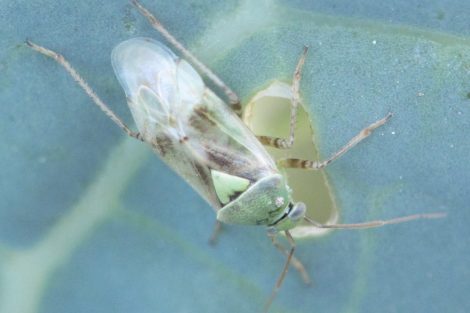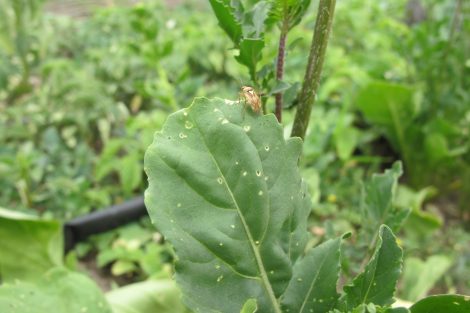Printable PDF
In This Issue
- Leafminer Damage on Spinach and Chard
- Earwigs on Early Season Crops
- Lygus Bugs
Leafminer Damage on Spinach and Chard
[m
ks_separator style=”solid” height=”1″]
Monitoring
Common vegetable leaf miner species in Utah include the American Serpentine Leafminer, Pea Leafminer, Spinach Leafminer, and Vegetable Leafminer. Hosts crops primarily being affected now include Swiss chard and spinach. Starting now, look for small rows of white, oblong eggs on host leaves along with damage signs.
Damage
Larvae feed and tunnel between the upper and lower leaf surfaces causing irregular white mines. Mines are initially transparent before turning brown. Pale yellow larvae may be found within the mine.
Management
Consider treatment when the population is high enough that it’s causing economic damage. To manage; exclude adult flies with row covers, implement crop rotation, and cultivate soil after harvest to disturb pupae.
Earwigs on Early Season Crops
Monitoring
European earwigs have been reported damaging early season crops such as beets, cabbage, cauliflower, chard, and peas. Monitor by setting up bait containers with smelly oils near susceptible hosts. Adults hide in dark, tight, and moist places during the day and are mainly active at night. Eggs are laid in clusters of 30-40 in nests in the soil. Adult’s bodies are brown, with a maroon head, and have a prominent pair of “pinchers” (cerci) on the rear of their bodies.
Damage
Earwigs feed on several parts of the host crops reducing crop yields and causing aesthetic injury. Earwigs also feed on fungi and other insects.
Management
Earwigs are more abundant in highly irrigated and mulched areas. Best manage by reducing hiding and nesting places and use traps to monitor and lower their numbers. Consider insecticides such as diatomaceous earth, Pyganic®, and GardenTech®Sevin when necessary.
Lygus Bugs
Monitoring
Lygus Bugs, also called Tarnished Plant Bugs are a concern throughout the season. Adults are brown with a yellow/green triangle on their upper back. Early season hosts include asparagus, cabbage, carrot, lettuce, seed crops, and alfalfa. Monitor by visually scouting or using sweep nets. Examine flowers to monitor for adults and nymphs.
Damage
Both adults and nymphs feed with their piercing-sucking mouthparts, this may lead to ragged discolored leaves, bronzing, and cat-facing on fruit.
Management
Lygus bugs are common to Utah and have the potential to cause economic injury to vegetable production. Manage by removing preferred hosts such s flowering weeds near field edges. Avoid planting near alfalfa fields if possible. Thresholds vary by crop but consider insecticides if necessary.













